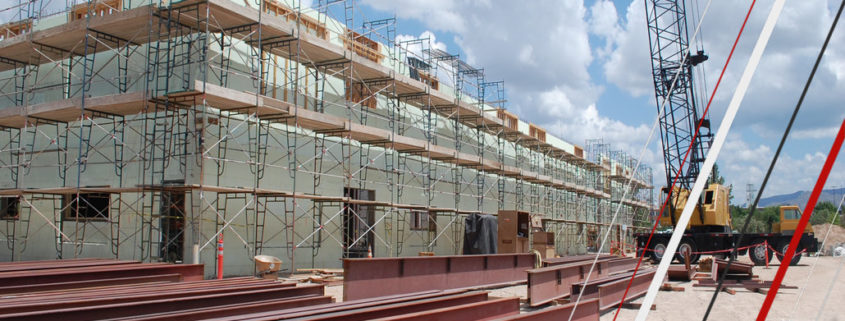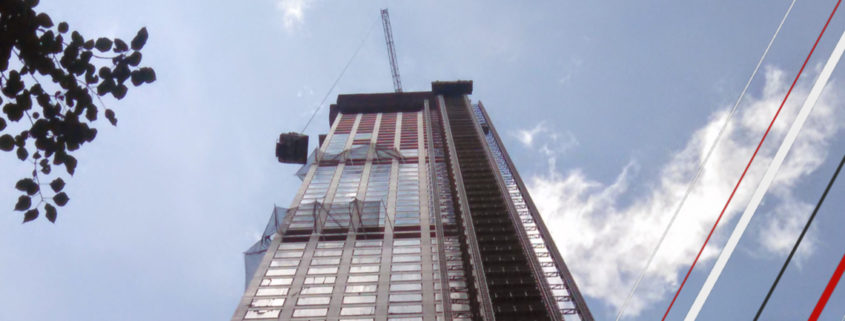Fire safety in construction a bigger priority post Grenfell
The construction industry has seen myriad improvements to fire safety since the Grenfell Tower fire, but there is frustration that the government has responded too slowly, a new study reveals.
Since the fire in June 2017, which killed 71 people, construction industry professionals have seen substantive changes in products used for cladding, insulation and fire doors, as well as greater demands for more fire testing of products.
A survey of construction professionals from all parts of the trade, conducted for UK Construction Week (UKCW), also suggested fire safety has become a bigger priority in revised procurement policies, tenders and contract terms, the survey reveals.
However, the government was widely criticised for taking too long to clarify new requirements since the fire and subsequent publication of the Hackitt Review on 17 May 2018.
One respondent to the survey said: “I just wish that action could happen more quickly”, while another said “things are changing, but way too slowly.” Another had particularly low expectations of the government: “The government will take a decade to produce yet another set of incomplete regulations together, and will probably produce another white paper. They need to set a clock on this.”
Asked what changes they had made since the tragedy respondents had most frequently reviewed project designs and specifications, commissioned additional fire risk assessments on projects and ramped up fire safety training.
They were also asked to pick the three changes they thought would most likely improve fire safety across the built environment, in buildings of all sizes and types. On average they most frequently cited greater involvement of some to conduct a full fire risk assessment to enhance design and specification – such as an architect, clerk of works, fire engineer, or fire and rescue service.
Contractor-led ‘Design and Build’
Many called for the end of contractor-led ‘Design and Build’ contracts.
Not far behind in second place was a sea change in specifying materials. Many backed the recently announced ban on combustible materials in exposed areas of a building, in particular cladding or insulation.
The aluminium composite material panels used on Grenfell Tower have been banned and more recent regulations will extend the ban to include plastics, wood and products that include combustible materials such as aluminium composite panels in the external wall systems used in residential buildings more than 18 metres tall. The only materials that will be allowed are those classed as A1 or A2, which includes elements such as metal, stone and glass, which seldom contribute to fires; or plasterboard, which makes no significant contribution.
The third most highly ranked change sought by construction professionals was the installation and regular maintenance of sprinklers and other active fire detection and suppression equipment into all buildings.
New regulations only ranked sixth on the industry’s list of priorities.
Asked to score out of 10 their confidence that the UK’s approach to fire safety in all buildings would now change for the better, respondents on average went for 6 out of 10.
Contractors, specialist sub-contractors and building products suppliers are marginally more confident than other groups (average confidence score of 7 out of 10).
“Our research shows that the industry has taken to heart every opportunity to change its practice and is already well along a process that will change the way all buildings are procured, design, built and maintained,” said Nathan Garnett, event director at UK Construction Week.
“This is an issue that will be discussed widely at next week’s event, and is likely to remain the highest agenda item for years to come. While confidence is quite good at this time, we must do all we can to maintain the positive attitude and momentum behind these changes.”
Geoff Wilkinson, managing director of Wilkinson Construction Consultants, a fire safety and building standards expert and one of the speakers at this year’s UKCW seminar on quality in construction post-Grenfell, says:
“It is very encouraging to see the industry getting on with it, despite the hiatus from Government. But what’s needed is an industry-wide coordinated response.
“The ban on combustible materials is long overdue. We need to be told why it has taken over a year to get to this point when a very simple changing of regulatory guidance could have achieved the same thing in days.”
Source: Ifsecglobal.com




